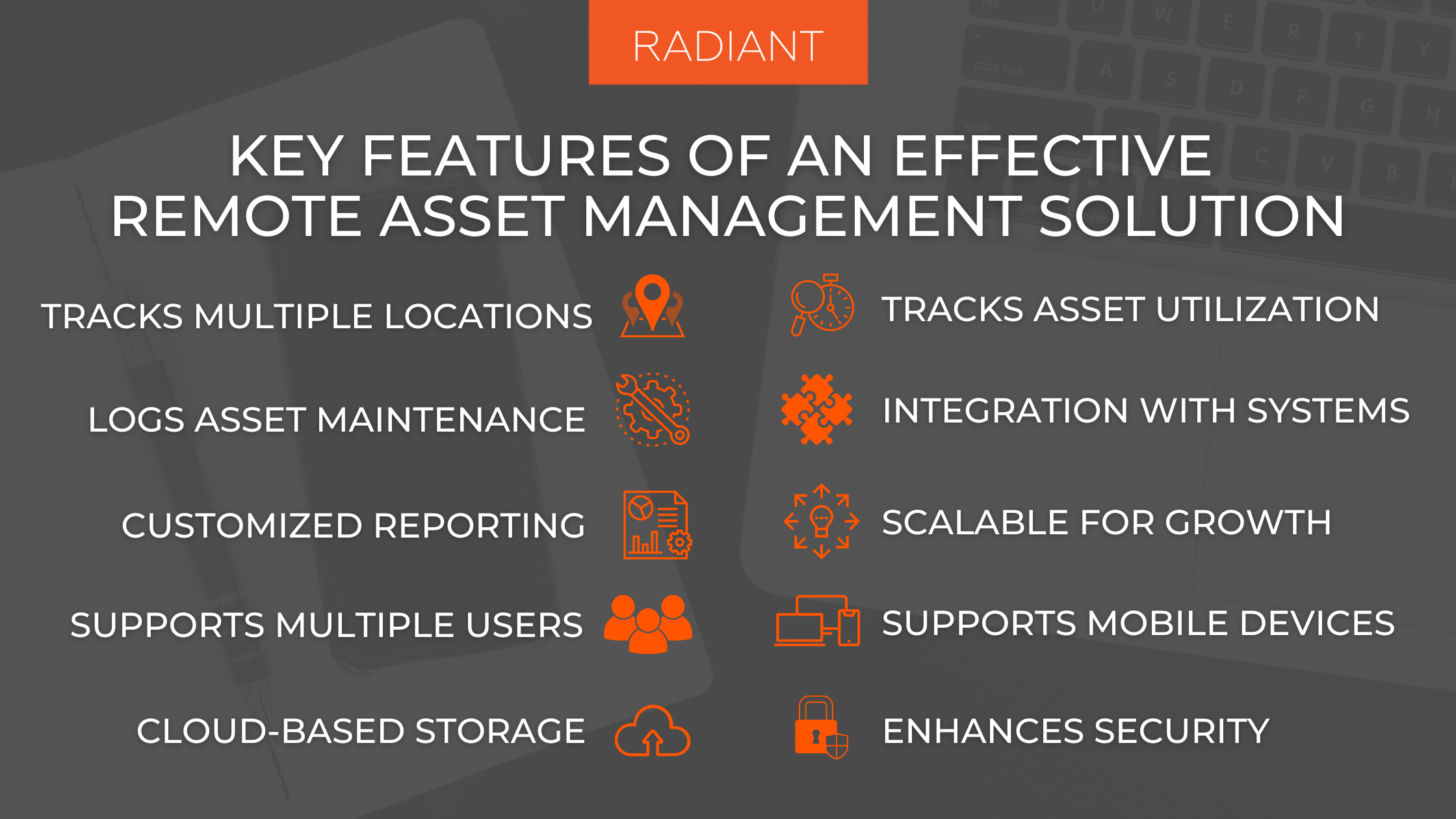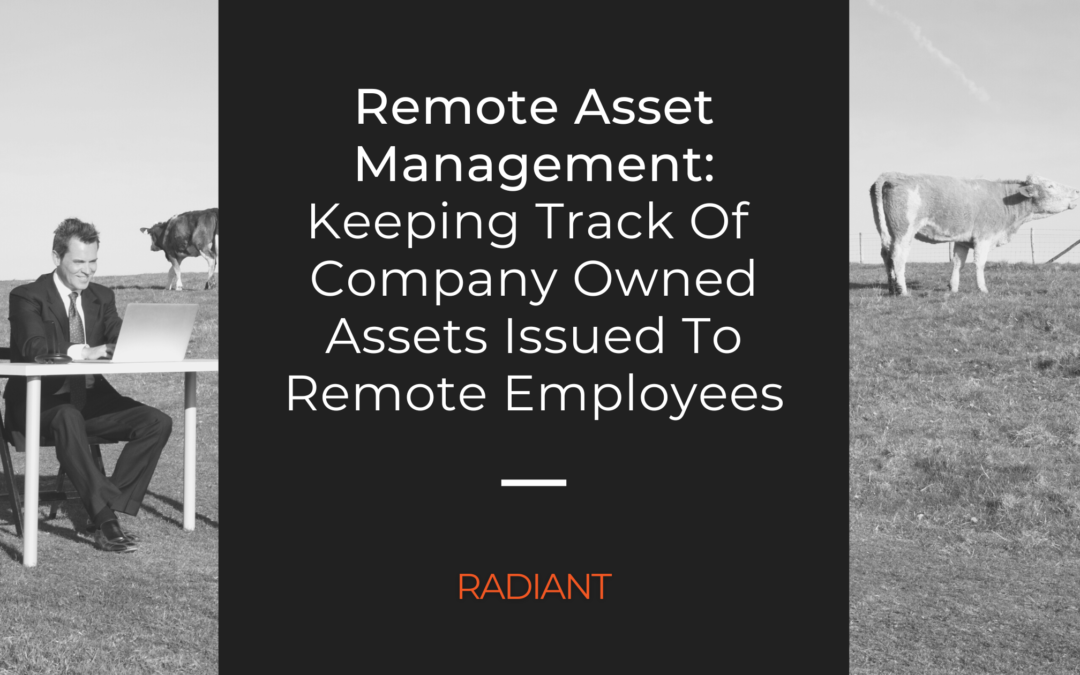When you have a workforce that’s spread out in different locations or an organization that has transitioned to a hybrid workforce, it becomes increasingly difficult to keep track of all their company-owned assets. Fortunately, there are remote asset management solutions that can help make this process a lot easier using big data.
In this post, we’ll take a look at what these asset management solutions are and how they can benefit your business if you make the strategic decision to deploy one. We’ll also discuss some of the key features to look for when making your selection. So if you’re looking for a way to better manage your remote workers’ Information Technology (IT) assets, read on.
What Is Remote Asset Management?
Remote asset management is a system used to keep track of assets that are located off-site. Such assets include PCs, laptops, tablets, and smartphones that are being used by remote employees. It can also include digital assets such as software licenses and contracts.
The goal of remote asset management is to ensure that these assets are being used properly and that they are secure. To do this, the system will track the location of each asset and provide a report on its usage. This information can be used to identify which IT assets are being used the most, where they are being used, and how they are being used.
Asset managers can then use this data to improve the security of the IT assets and make sure that they are being used efficiently. Remote asset management can be a valuable tool for effective lifecycle management of IT assets and ensuring that they are being used properly, even if they are outside the office.
How Does Remote Asset Management Work For Tracking IT Assets?
Remote work is here to stay, with more and more businesses relying on remote asset management systems to keep track of their IT asset inventories used by remote employees. The remote asset management market is projected to grow from USD 16.5 billion in 2020 to USD 32.6 billion by 2025.
Here’s how asset management ITAM works: businesses install asset tracking hardware and software on their devices that allows them to remotely track and manage their IT assets. This asset management software can provide a variety of information, such as the location of the device, how it’s being used, and any potential issues that need to be addressed.
This information is then transmitted to a central server, where it can be accessed by asset managers. This system provides a number of benefits, including the ability to remotely manage and monitor assets, as well as the ability to identify and resolve potential issues before they become problems.
As more businesses move to a remote or hybrid workforce model, asset management systems will become increasingly important in ensuring that businesses can keep track of their IT assets.
What Are The Benefits Of Remote Asset Management Systems?
A remote asset management system can offer a number of benefits for businesses that have employees who work remotely.
Perhaps most importantly, it can help to keep track of IT assets that are in use by remote employees. This is important for two reasons.
- First, it helps to ensure that those assets are being used properly and not being mishandled or abused.
- Second, it provides a way to quickly locate and recover assets if they are lost or stolen. It also makes it easier to know what assets should be returned if an employee leaves the company.
In addition, a remote asset management system can help to keep track of the inventory of IT assets, making it easier to order new equipment when needed and ensuring that all assets are accounted for.
Finally, by tracking the usage of IT assets in real-time, businesses can get a better understanding of which assets are being used most frequently and which ones may be underutilized. This information can then be used to make decisions about which assets to keep in stock and which ones to remove from the inventory.
Overall, a remote asset management system can provide a number of benefits for businesses that have employees who work remotely. By helping to keep track of IT assets and by providing a way to locate and recover lost or stolen assets, such a system can help businesses to protect their investment in IT equipment throughout the asset lifecycle.
Additionally, by tracking the usage of IT assets, businesses can gain a better understanding of which assets are most important to their operation and which ones may be superfluous.
Key Features of an Effective Remote Asset Management Solution
Businesses have more employees working remotely than ever before. With remote work comes the need for a different kind of asset management system – one that can keep track of IT assets located in different places. There are a few key features that businesses should look for when choosing a remote asset management system:

1) Tracks IT Assets in Multiple Locations: Allows businesses to see where their IT assets are located at all times, no matter where they are in the world.
2) Tracks Asset Utilization: This information can be used to make sure that employees are using the right tools for the job and that IT assets are being used efficiently.
3) Tracks Asset Maintenance: This information can be used to make sure that IT assets are properly cared for and that they stay in good working condition.
4) Integration With Other Systems: By integrating with existing systems, such as accounting or customer relationship management (CRM) systems, the solution will make it even easier for businesses to keep track of their IT assets.
5) Scalability: A good remote asset management system should be able to scale as the business grows. This scalability will ensure that businesses can keep track of their IT assets as they add more employees and expand into new locations.
6) Customized Reporting: An effective asset management solution will be able to generate reports on asset usage, location, and maintenance. These reports will help businesses understand how their IT assets are being used and identify areas where improvements can be made.
7) Supports Mobile Devices: A key component of a remote asset management solution is its ability to support mobile devices, such as laptops, smartphones, and tablets. This support will ensure that businesses can keep track of their IT assets even when they are not in the office.
8) Supports Multiple Users: By supporting multiple users, businesses can have multiple people using the system at the same time. This feature is essential for businesses with large numbers of employees or with employees located in different parts of the world.
9) Utilizes Cloud-Based Storage: Cloud-based storage is critical for remote tracking so that businesses can access their asset data from anywhere in the world.
10) Enhances Security: Security features, such as user authentication and data encryption, can protect data from unauthorized access. This security is essential for businesses handling sensitive data or dealing with confidential information.
These are just a few of the key features that businesses should look for when choosing a remote asset management system; however, each business is unique and so there may be other features that are important for your business specifically.
When choosing a remote asset management system for your business, it is important to take into account your specific needs in order to find a system that is right for you.
Keep Track of IT Assets With Remote Asset Management
Managing company assets is always a challenge, but it can be even more difficult when you have a remote workforce. Fortunately, there are tools and solutions available to help you keep track of your IT assets no matter where your employees are located.
At Radiant, we offer a comprehensive asset management solution that can help you manage your company’s valuable resources efficiently and effectively. To learn more about our solution and how it can benefit your business, please explore our website or request your demo below.
Last Updated on September 15, 2022 by Radiant

